Every time he came home while studying and living outside Shillong for more than 15 years, Calvin Lyngdoh noticed some traditional homes along the roads and localities consumed by
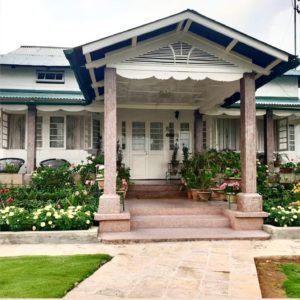
the change in the urban landscape. The concrete structures that began replacing the traditional Shillong-style homes made him sentimental enough to start a project for documenting the architectural changes through the eyes of several owners of nostalgia-filled homes.
Homes on a Page
Started as a contributory page on Instagram, ‘Shillong Homes’ founded by Calvin showcases the traditional homes that people own – some standing on their last legs, some locked and deserted, others converted to offices and a few maintained to stir the emotions of onlookers.
“Places such as Shimla, Mussorie and McLeodganj are no more the charming hill stations they once were because of rapid commercialisation. They have become concrete jungles and look the same,” Calvin says. Shillong is turning out to be no different, he feels.
“From Mawlai to Nongthymmai, the quaint houses are rapidly getting replaced by cement structures of all shapes and sizes. Apart from having zero aesthetics, they tower menacingly
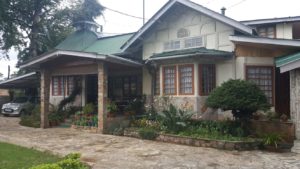
over the older traditional houses. Shillong has started resembling any other city in the country. That’s when it struck me that I should start documenting the last few of these homes in some way or the other and make people aware of the heritage we are losing and find a way to preserve them. I started clicking pictures of such homes whenever I saw them in and around town and posted them on Instagram and Facebook. Many are now contributing to these social media pages,” he says.
Gerald Pde, the principal architect of Rngikseh Architecture, has more than 15 years of experience in architecture, environmental design and structural modelling. He says: “Older generations always reminisce about the old houses. But I think we are now living in a different, divided world with so much ego. It seems a lot of people are delusional about what they really want; there is this idea that a big concrete house can put them in a better position in society but little do they realise what they are sacrificing. It seems living in a monstrosity of a house can make them happy but happiness in terms of our habitat is just the opposite. Humans have always lived in tune with nature, with the seasons, with trees and plants, with privacy and staying connected. All these aspects can create happiness within a household and
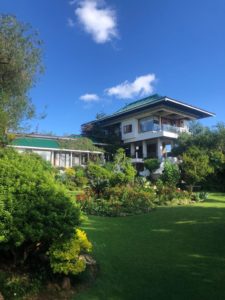
that cascades to the larger society also.”
Attachment to Tradition
Excerpts from a few traditional house owners set the tone for evocative presentations. “Our house, Grace Cottage is situated in Jaiaw Lumsyntiew and was built in 1966. It belonged to my grandmother, Alma Gracie Gyndykes Dkhar who we all fondly called mom. We have had four generations living in it. After grandmother’s demise, it is now looked after by my aunts,” Daniel Syiem says.
He explains the sentimental value of his house. “Grace Cottage is not just a house but a home for all of us especially after recently losing mom, the soul of the house. The walls hold memories that go down to generations; they hold stories of laughter and tears and challenges that have been overcome,” he says.
Sharing interesting trivia on the name of his house, Retd. Colonel A. Dutta says: “The name is Madhushree. Earlier, I had assumed that this was a result of my parents’ Calcutta connection.
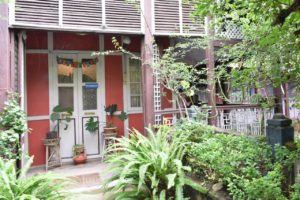
Both studied there, my mother from Class III onwards. But the late Dhyan Sharma said this name was suggested by none other than the great Rabindranath Tagore. I don’t remember my mother ever mentioning this to us, although she said she had met the great litterateur in Calcutta and, as a schoolgirl had sat next to him and he charmed her with his wit.”
Like most traditional homes with an historical link to the erstwhile British-era Assam, Devi Dey Goswami, the owner of Jamini Kutir on Jail Road shares: “This house was the employment exchange office given on rent. My father-in-law, Amulya Lal Dey purchased it from Dijen Sen in 1945. The house has sustained three generations since.”
In pride of family inheritance, architect and chairman of Centre Point Group Enterprise, Prabhat D. Sawyan says, “My traditional Shillong-style or Assam type ancestral home in Umsoshun, where I grew up, is 124 years old. It was built soon after the big earthquake on June 12, 1897, by my maternal great grandfather U Jeebon Roy after the original stone
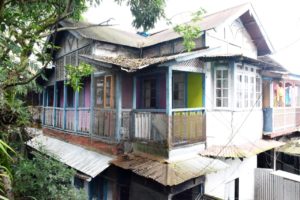
masonry load-bearing wall-style building collapsed because of the quake.” The current occupants are the fourth and fifth generations.
“These homes attain an aura of history and heritage where the winds of the time have breezed through. So, it’s naturally incumbent to preserve and uphold the sanctity of their existence and stories to tell,” he adds.
A resident of Risa Colony, Joshua Marbaniang describes the sentiments attached with their home, Mabeline. “It is a symbol of family and sense of continuity. It represents the values that our parents and grandparents instilled in us. It is a place where everyone is welcome, where extended family gather to celebrate festivals and continue traditions started by our parents and grandparents. It is a symbol of our heritage, of memories made and of a future full of promise. The home represents the people we have become and we would have it no other way,” he says.
Syiem says of Grace Cottage: “This house keeps alive the memory of my grandmother. Personally, as a fashion designer promoting sustainable fashion, I believe in sustainability not only in the clothes that we wear but also in sustaining our history, our culture, and our
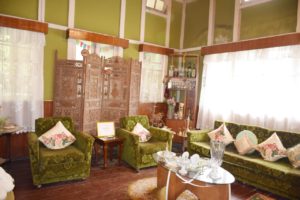
tradition. These traditional homes hold so much more importance and value than the mansions that are replacing them. The new structures are just houses, not homes.”
Furthering her attachment to her home, a resident of Mawlai, Nongpdeng, Wandalinia Lyngdoh says, “This house has memories and history dating back several decades when our great, great grandparents lived in it. The house was renovated in the 1960s due to some damages, but we tried to maintain the original structure. Most friends or family members who visit us usually feel “homely” and comfortable as it brings out the emotions being inside of this home. We want to keep the tradition going hence this house remains to this day.”
Maintenance Factor
Maintenance of the Assam type houses, especially the wooden superstructure and floors (mostly local pine) is a major issue, Dutta says. “Wood used those days was well seasoned and treated with wood oil before use, making them termite-resistant and hardy. The structure rested on 2-3 feet high brick and mortar plinths that kept the wooden floors raised above the earth and the ventilation thus available prevented moisture from the ground spoiling the wood. The keyword in maintenance is ‘timely’. If one is able to attend to any repair – however small such as a crack or the beginning of any termite activity – at the earliest, the problems do not aggravate.”
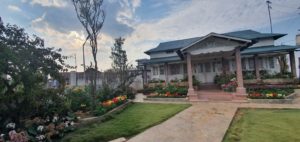
He explains: “The walls were peculiar to Assam-type houses. A frame of eckra (a type of cane) was plastered over on both sides with a mixture of sand and lime. The advantage of such walls over cement walls, I believe was that any seepage caused by rain dried up faster. But with time, people replaced the sand and lime mix mortar with cement. The roof was of corrugated iron sheets galvanized with a zinc layer and later painted with red oxide paint to prevent rusting. Here too if the slightest problem is attended to immediately on detection, the maintenance is easy.”
Acknowledging the difficulty in the upkeep of the house, Goswami says, “It is very hard to maintain a wooden structured house as it is expensive and some materials are not available. Due to heavy rainfall, the structure tends to get affected from time to time and needs repairing round the year.
Though it is expensive to maintain a house like this, as family members, we are very proud to reside in this property and ever grateful to Amulya Lal Dey for this beautiful house. It was his hard work that made it possible for him to buy such a wonderful property in the heart of the city.”

Wandalinia Lyngdoh, agrees on the cost factor. “Maintenance of an Assam-type house is not easy. Having a house made mostly of wood is sometimes a little challenging as painting it is a major part; the window sills and doors need to be cleaned once a month as they accumulate dirt faster. The wooden floors are a little hard to maintain as we can’t clean them with water but instead with polish or wax; hence we cover our floors with carpets now,” she says.
On the shift to concrete homes, Dutta affirms, “Maintenance is easier in the sense that things last longer, the repair is less frequently needed. Most house owners today find wall and floor tiles more convenient, electric fires, heaters, etc., are far less messy compared to coal-burning
fireplaces. Environmentally also their benefits are unquestionable. Fewer trees need to be chopped down. Installation of innovations like solar-powered electricity is easier.”
Based on his expertise in the field, Pde says, “Material notwithstanding, any house needs maintenance. That’s the nature of Entropy. But there is a life-span for various materials of construction and old Shillong houses are also subjected to the same laws of nature. However, one must realise that through living in an exquisite old home how that mindfully benefits its occupants and their quality of life.”
Urbanisation Versus Traditionalism
Commenting on the uptake of the contemporary fashioned home styles, Calvin says, “I absolutely understand why people shift to concrete structures when they demolish their old homes – families grow, they need more space to accommodate more members. Our traditional homes have weak structures compared to the concrete ones that allow
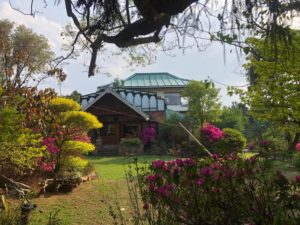
homeowners to expand their houses vertically. They are also more solid and are low maintenance. But we are doing all this without giving a thought to how fast we are destroying our old architecture and there has not been a single structure in the past decade that has been built ground-up in the traditional way. So, it is a double-edged sword – old homes are being destroyed and replaced with concrete ones and structures on new plots also are concrete.”
On this note, Dutta says, “Unfortunately, in spite of all modern concepts and materials available, Shillong joins those cities in India that have suffered from a mindless, uncontrolled expansion where the biggest victims have been aesthetics and environment. An inward, selfish mindset of the citizenry has resulted in haphazard concrete jungles with authorities turning a blind eye to the violation of building rules.”
On the matter of urbanisation, Pde says, “There is a technical aspect to it and most of these buildings are done by self-styled contractors or some uncle who knows nothing about design, with little to no experience in design and so you end up with huge buildings which do not work functionally. These buildings end up becoming eye-sores in our once charming town, replacing the old with this new disgust.”
But he would rather not state his preference between the two styles. “As an architect, I don’t have a particular choice between the new or the old. My preference is a home where I have the sun, light, ventilation, views, connected with the outdoors, a kitchen garden, maybe spaces to drink coffee in the morning while basking in it with my family,” he says.
With an alternate perspective, Sawyan says “My personal house is a mixed bag. It encompasses all the periods and styles as it has grown organically spanning more than four decades from inception. I often refer to it as my architectural laboratory where all my design and architectural thoughts manifest themselves, along with experimentation with materials old and new, an eclectic presentation or “allism”. Graceful evolution from the old to the new is a good thing and should be encouraged. It will ensure that identity is not lost or compromised.”
He adds: “Shillong architecture is evolving in its own way and has its own distinctness. Sometimes, it may seem haphazard or collage type, particularly with the daily infusion of a vast array of new materials and techniques, thence a certain confusion becomes evident and understandable. I believe a set of building doctrines based on a cogent guiding philosophy in sync with Shillong, its history, environment and culture should arrive centre stage, sooner than later.”
Most homeowners of these classic homes, irrespective of the cost, weathering the ravages of nature still do opt for retaining them. As we live to witness the changing cityscape, whether these iconic homes so intrinsic to Shillong dwindle further – reduced to an almost extinct breed, or only to remain as archetypal official residences – will be another story of the morrow.



